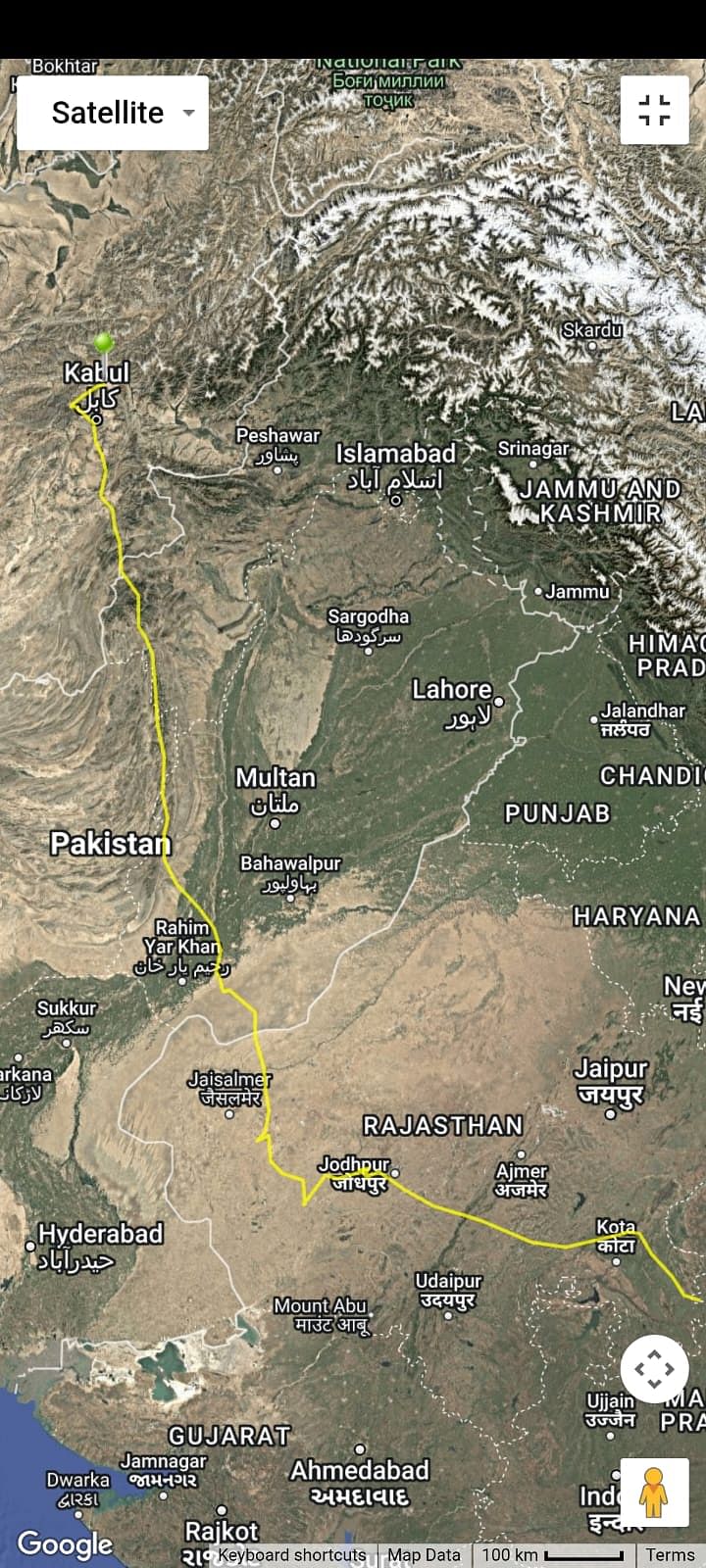Bhopal: From flying over the dusty fields of northeastern Madhya Pradesh’s Satna to theskies over Afghanistan, a Eurasian Griffon vulture has completed a breathtaking journey—one that began with a dehydration-induced fall in India.
After being rescued in January this year and spending nearly two months in recovery at the vulture conservation center in Bhopal’s Vanvihar National Park & Zoo, the male Eurasian Griffon released on 29 March has reached as far as Mazar-i-Sharif, near the Tajikistan border in Afghanistan.
“It was the locals who first alerted us,” a forest officer from Bhopal told ThePrint, recalling the time he first learnt of the vulture collapsing. He added that when his team reached the spot, the bird was visibly weak and needed immediate attention.
The vulture was initially treated in Satna and later transferred to the vulture conservation center in Bhopal for specialised care.

Each winter, Eurasian Griffons, one of the largest Old World vultures, migrate from their home ranges in Europe and Central Asia in search of warmer climates and food. While their primary range includes countries like Spain, Turkey, and Kazakhstan, small numbers occasionally make their way to northern and central India, including Madhya Pradesh.
This particular griffon was among them—spotted multiple times in Satna city before being found collapsed, weakened from dehydration.
Madhya Pradesh has earned a reputation as India’s “vulture state” due to its relatively stable vulture populations and dedicated conservation infrastructure. It is home to seven of the nine species of vultures found in India, including critically endangered ones such as the white-rumped, slender-billed, and Indian vulture.
Key protected areas such as the Panna Tiger Reserve and the Gandhi Sagar Wildlife Sanctuary have become important nesting and breeding grounds. Moreover, initiatives like the vulture conservation centre in Bhopal’s Vanvihar National Park & Zoo play a critical role in rescue, rehabilitation, and awareness.
This comes at a time when vulture populations across the subcontinent continue to battle threats like habitat loss, poisoning, and the lingering impact of veterinary drugs like diclofenac.
“We received a formal request to take in the griffon,” said Vanvhihar director Avdesh Meena “We quarantined him first and started feeding him goat meat twice a week.” But the griffon, which had been eating well in Satna, suddenly stopped eating. In response, the team switched to buffalo meat—his original diet—but to no avail.
It wasn’t until the bird was placed in a communal enclosure with other vultures that he began eating again. “He was clearly distressed in isolation. As soon as he was among others of his kind, his appetite returned,” Meena recalled.
Also Read: 30 days, over 500 volunteers & one mission: to count India’s vulnerable vulture population
Preparing for ‘call of the wild’
Over the next several weeks, the griffon steadily regained strength. With summer months approaching, forest officials began scouting for a safe release site—one that could mimic his natural habitat and help him resume his migratory route.
“There were two key criteria,” Meena explained. “First, a steady supply of carcasses for feeding, and second, access to water—vultures often bathe after eating.” An initial site near a cow shelter with frequent cattle deaths and the nearby Kerwa Dam was considered. But when a carcass placed there failed to attract vultures, the plan was changed.
The team finally selected Halali Dam, about 50 km from Bhopal, where a small committee of Eurasian Griffons were recently spotted. Before release, the rescued bird was fitted with a solar-powered GPS tracker, enabling forest officials to monitor its movements in real time.
The griffon flew first to Lateri in Vidisha district, covering nearly 85 km.
When he remained stationary for over 24 hours, a team from the Vidisha forest division was dispatched to track and check on him.
“We found him perched on a treetop, simply resting,” said Subharanjan Sen, principal chief conservator of forests (wildlife). “He resumed his journey the next day.”

What followed was an extraordinary transcontinental flight. From Vidisha, the vulture moved through Ashok Nagar, entered Rajasthan through Jhalawar district, and then crossed into Pakistan. From there, it flew to Kabul and onward to Mazar-i-Sharif in northern Afghanistan— an area that lies along the migratory corridor leading to Central Asia.
Officials believe he may next cross the Caspian Sea en route to Azerbaijan.
“This is a milestone,” said Sen. “While we have previously tagged Himalayan vultures that come to Panna Tiger Reserve, this is the first case of a griffon falling back, being nursed to health, and then successfully rejoining its migratory path. Tracking data we’ve gathered will be invaluable for understanding their routes, strengthening future conservation efforts.”
(Edited by Amrtansh Arora)
Also Read: ‘Mia’, this bearded vulture is the world’s first bird to get a prosthetic foot




